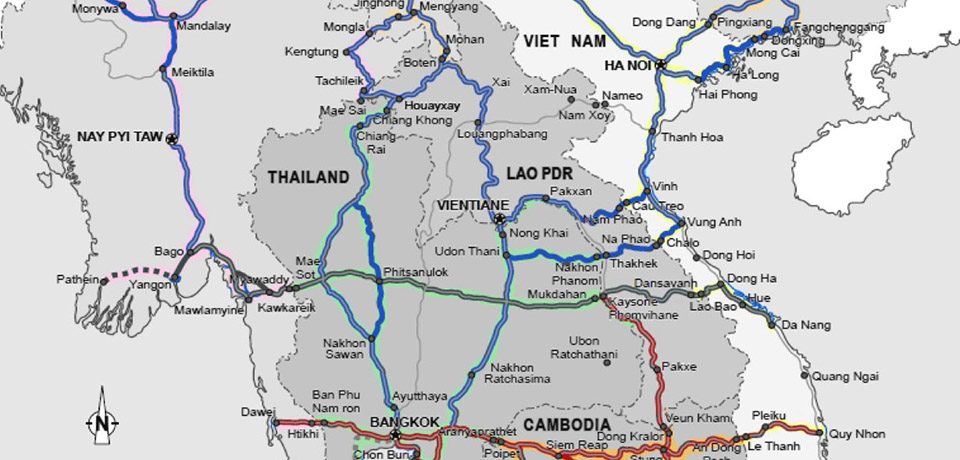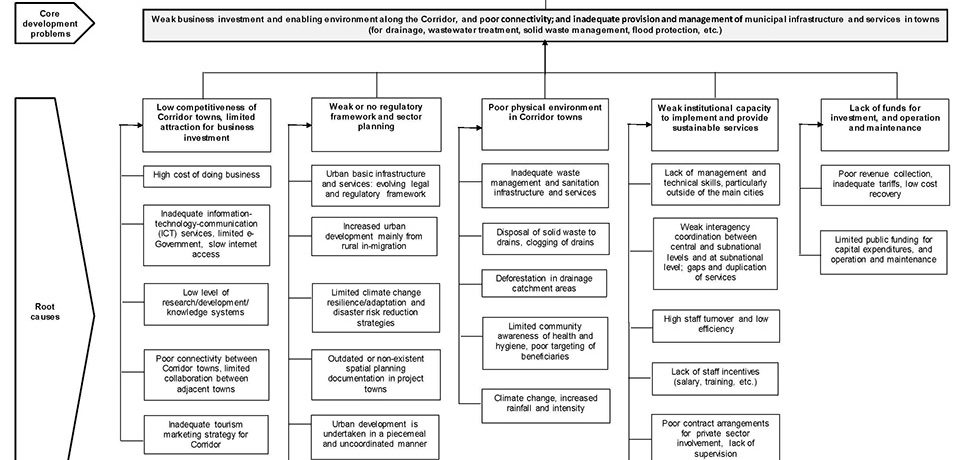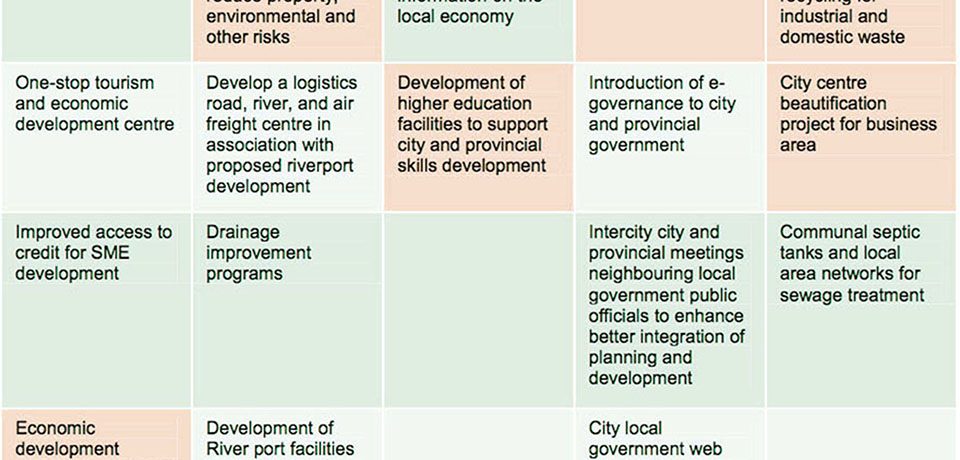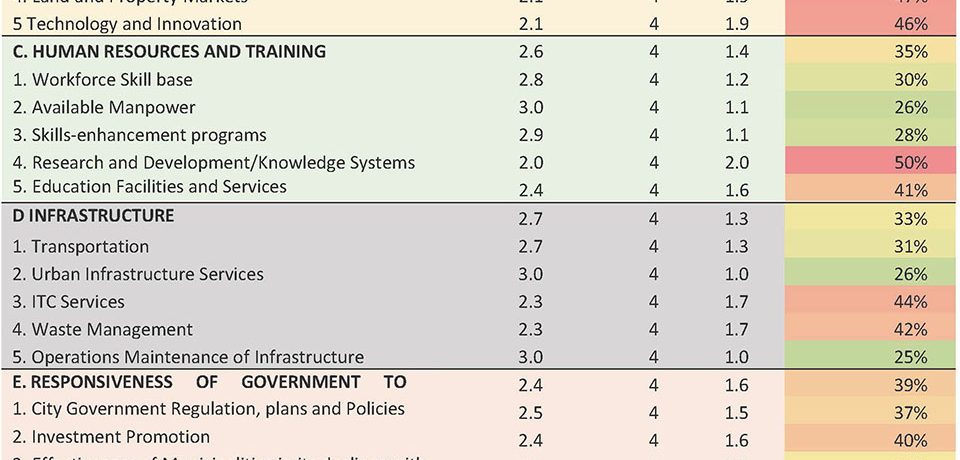Poor connectivity between corridor towns is one of the most significant impediments to trade, investment, and accessibility to markets and tourism destinations. Connectivity is not only concerned with making improvements to transport and communications but also creating the enabling environments to support the growth of trade, investment, exchange of information and knowledge, business networks and collaborative governance arrangements to address development problems and formulate policies for the development of the corridors. Improving these enabling factors will be crucial to increasing the rate of growth and stimulating the development of all towns and cities along the corridors.
An evaluation was undertaken for a range of socio-economic and development indicators of the largest towns in provinces in Cambodia and Lao PDR. The purpose was to determine which towns should be selected for inclusion in the Project. An index of 11 indicators was compiled to measure urbanization, poverty and health, basic urban services, household incomes, enterprise expenditure and profits for the 24 provinces (including urban areas) which provides a comparison of differences in levels of socio-economic development. The 11 data sets for the 24 provinces and urban centres were individually ranked from best to worst performance.
The cities selected for financial support by the ADB were Kratie, Kampong Cham and Stung Treng in Cambodia, and Paksan and Thakhek in Lao PDR.




